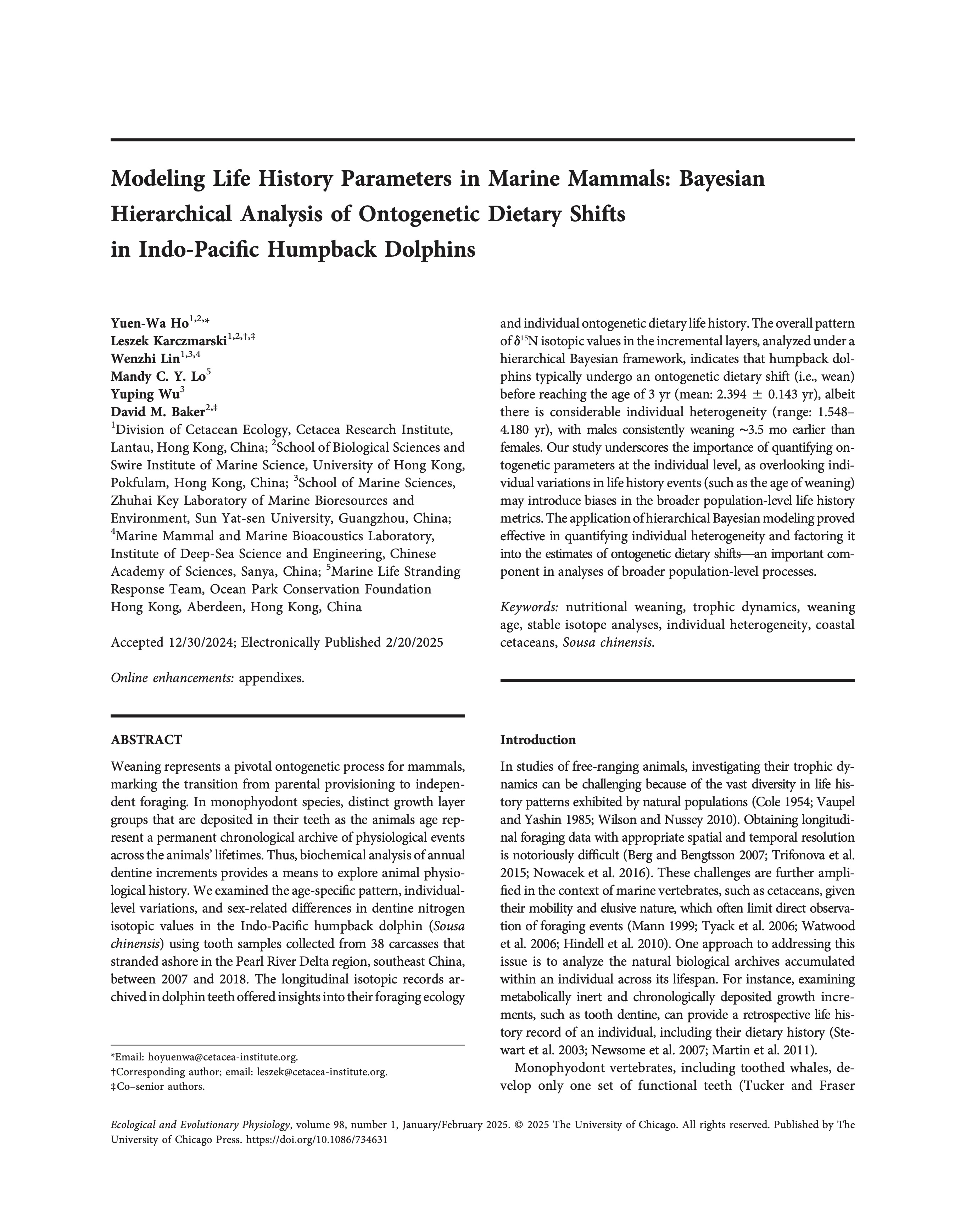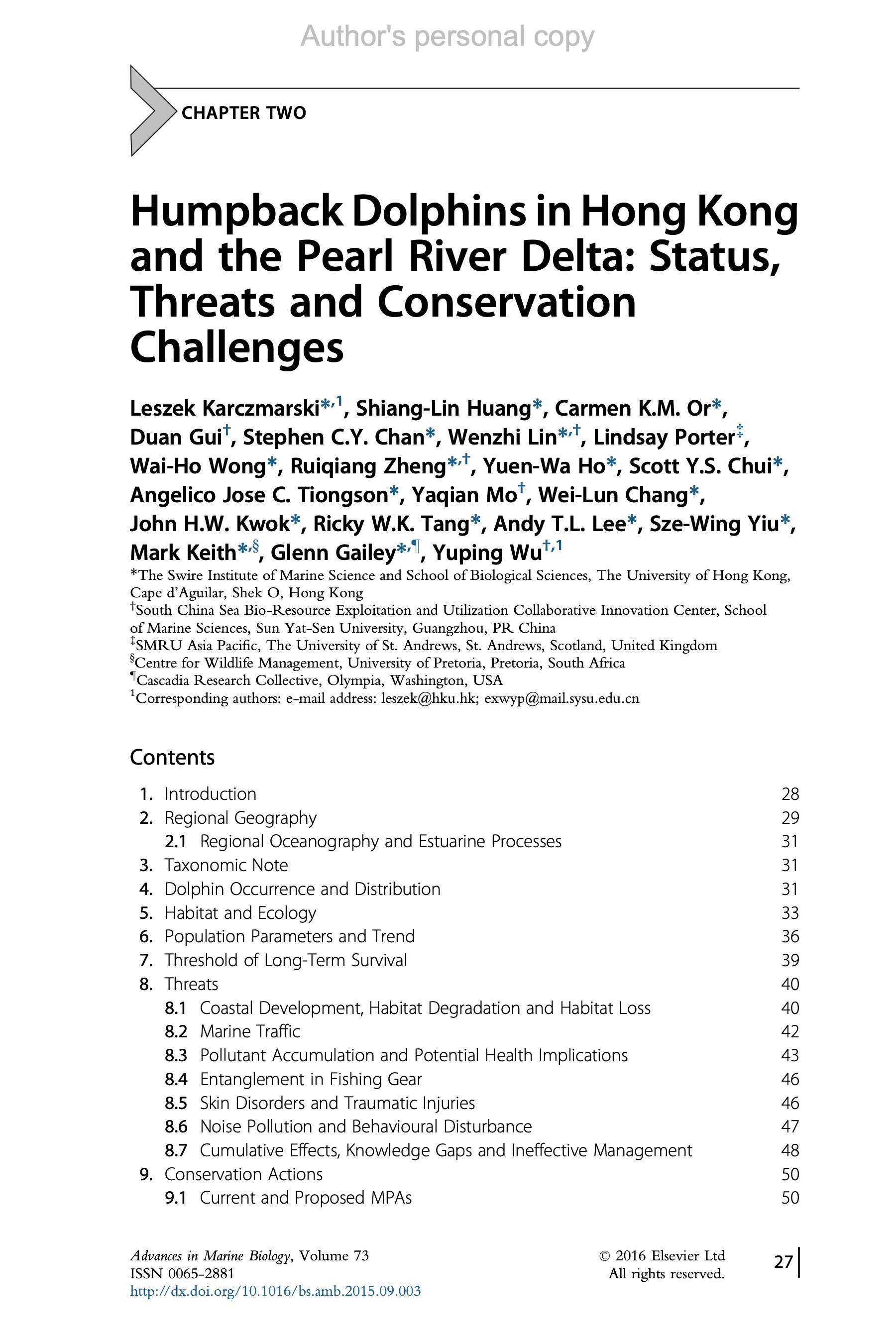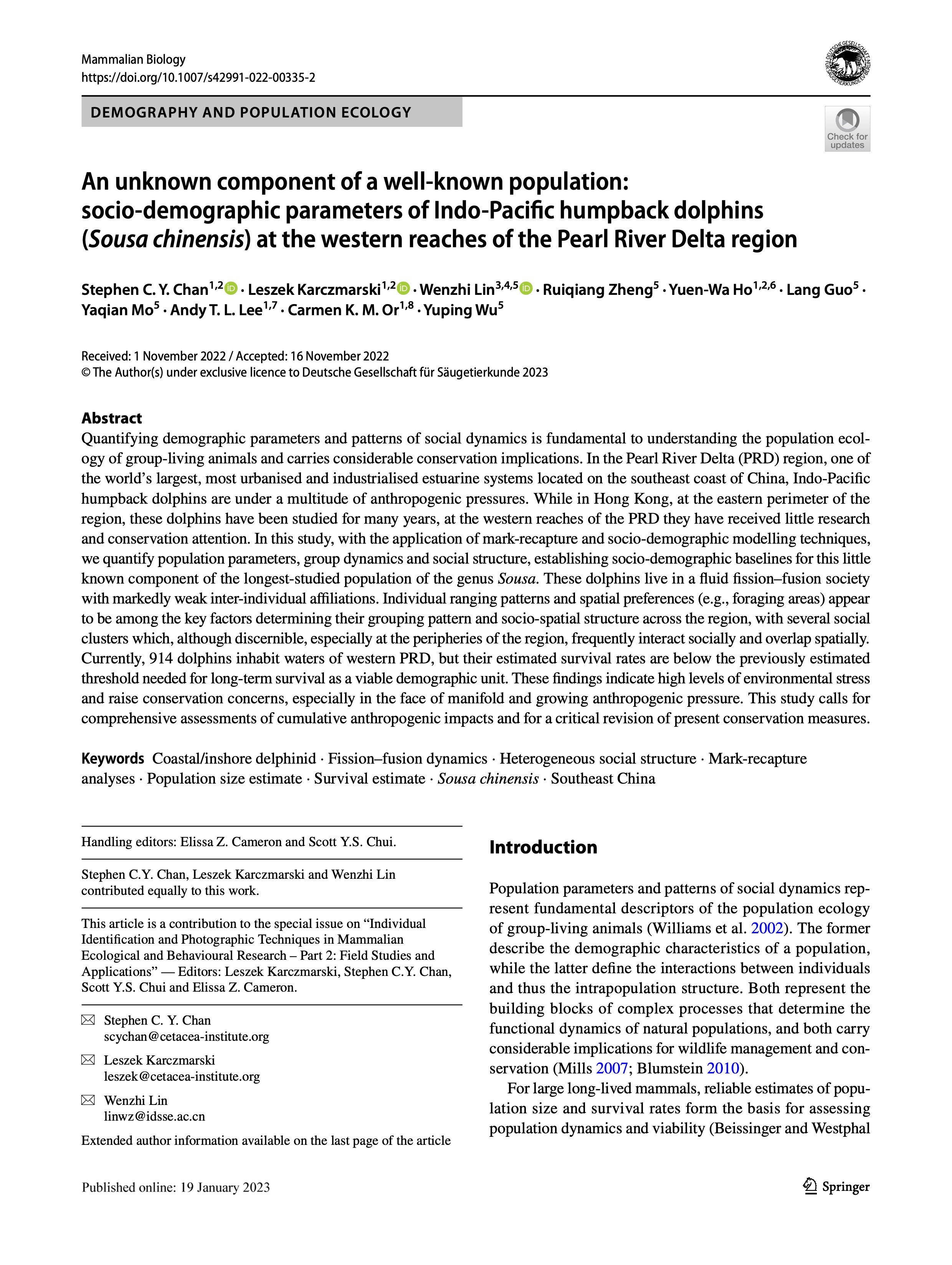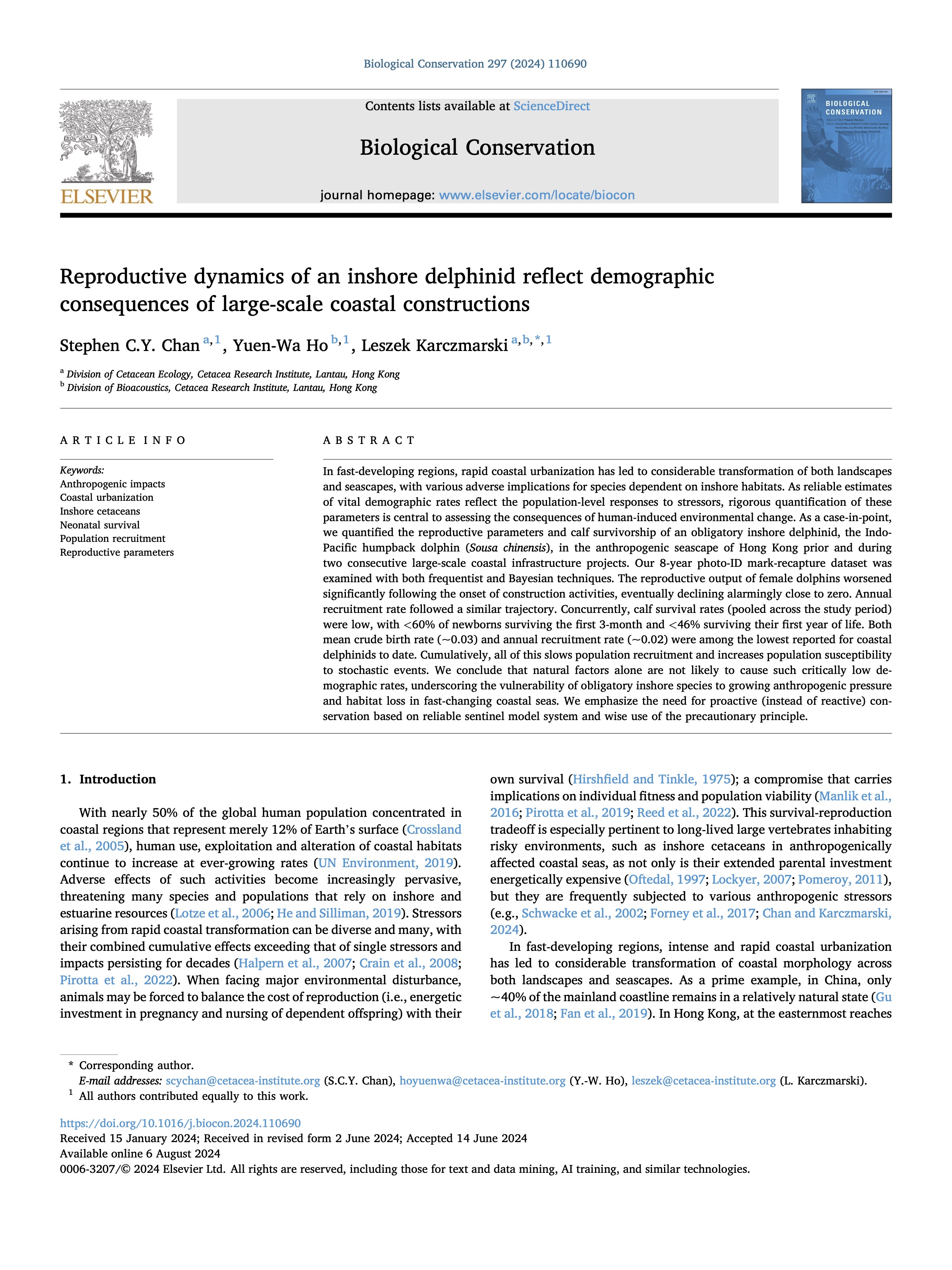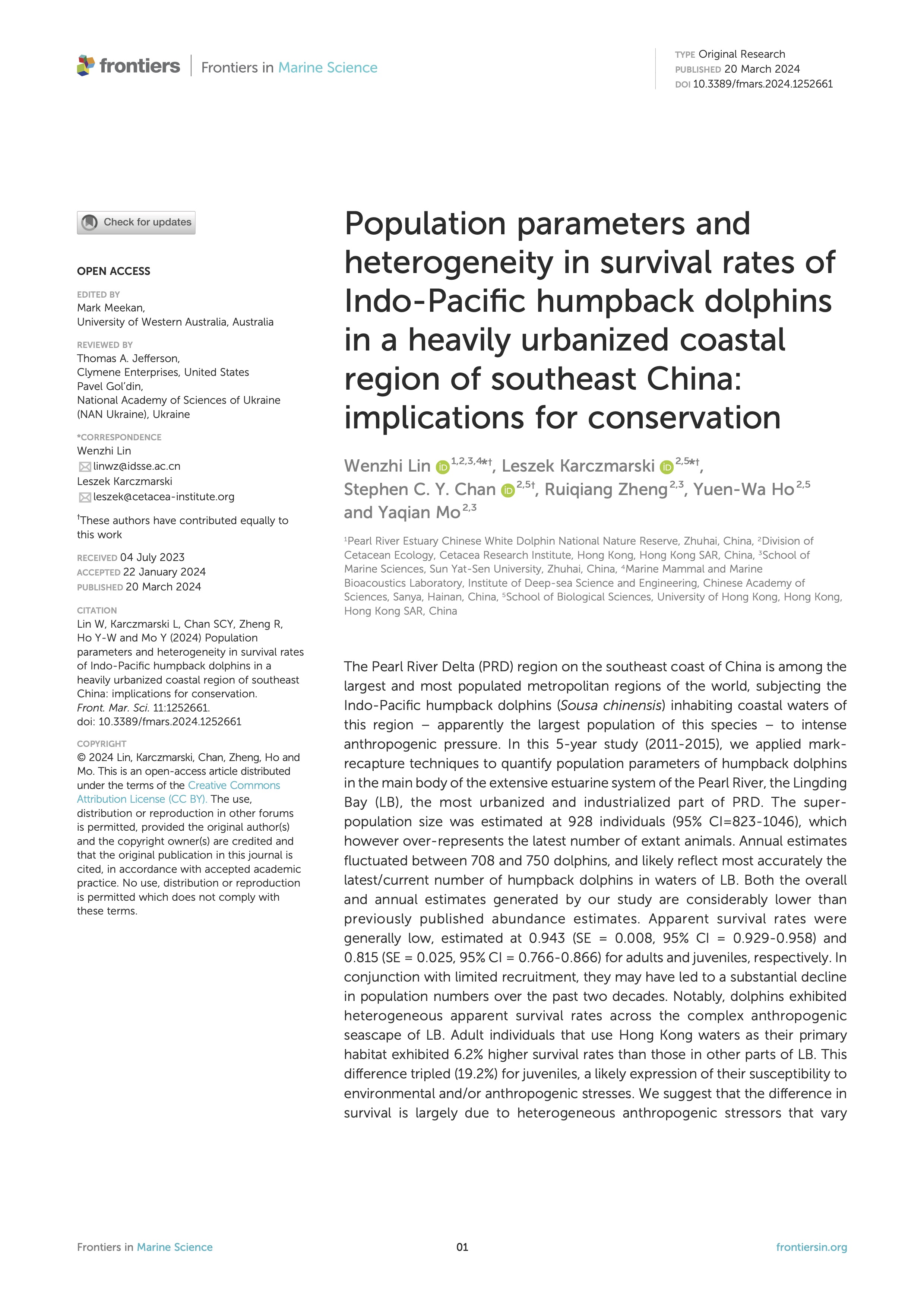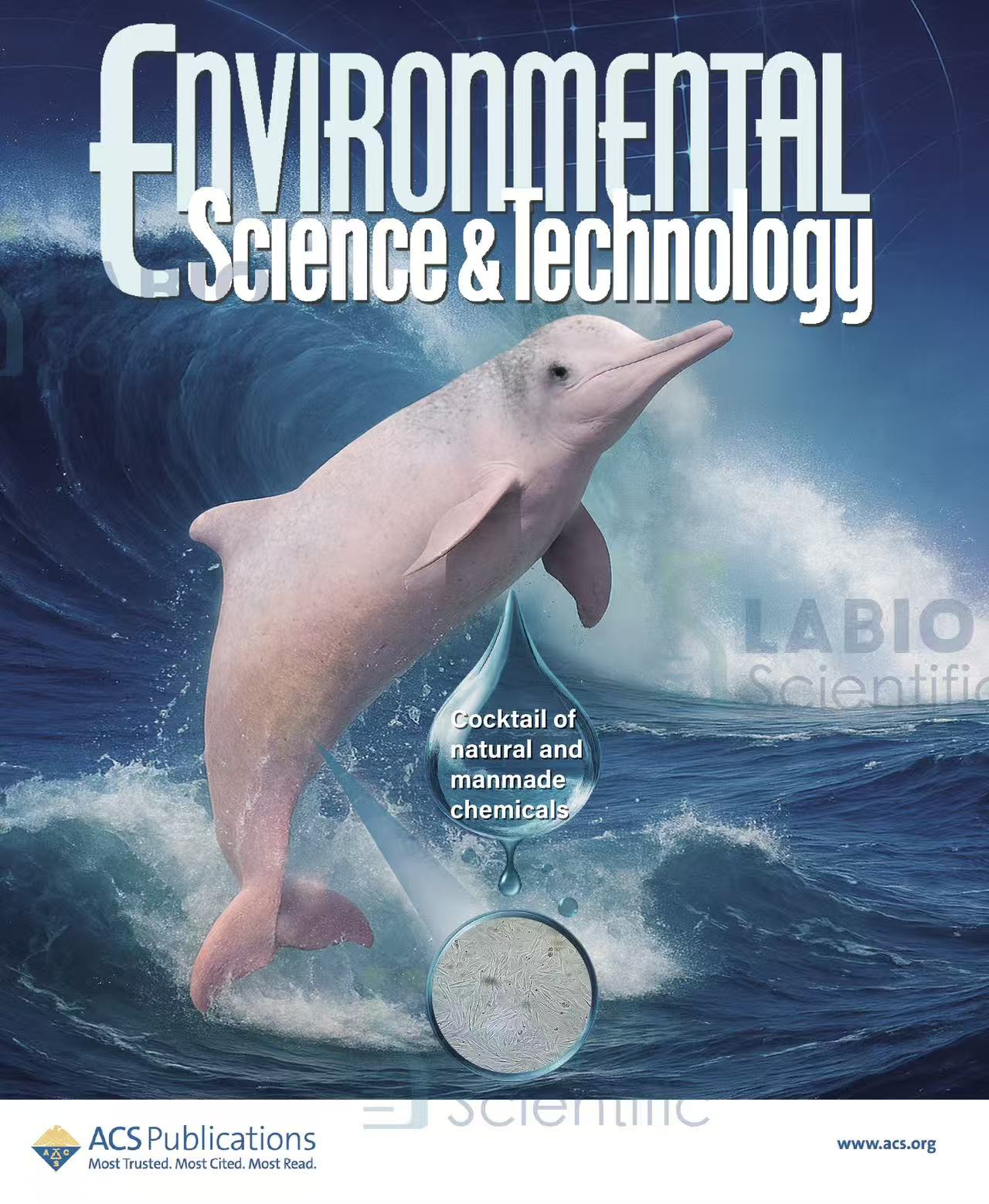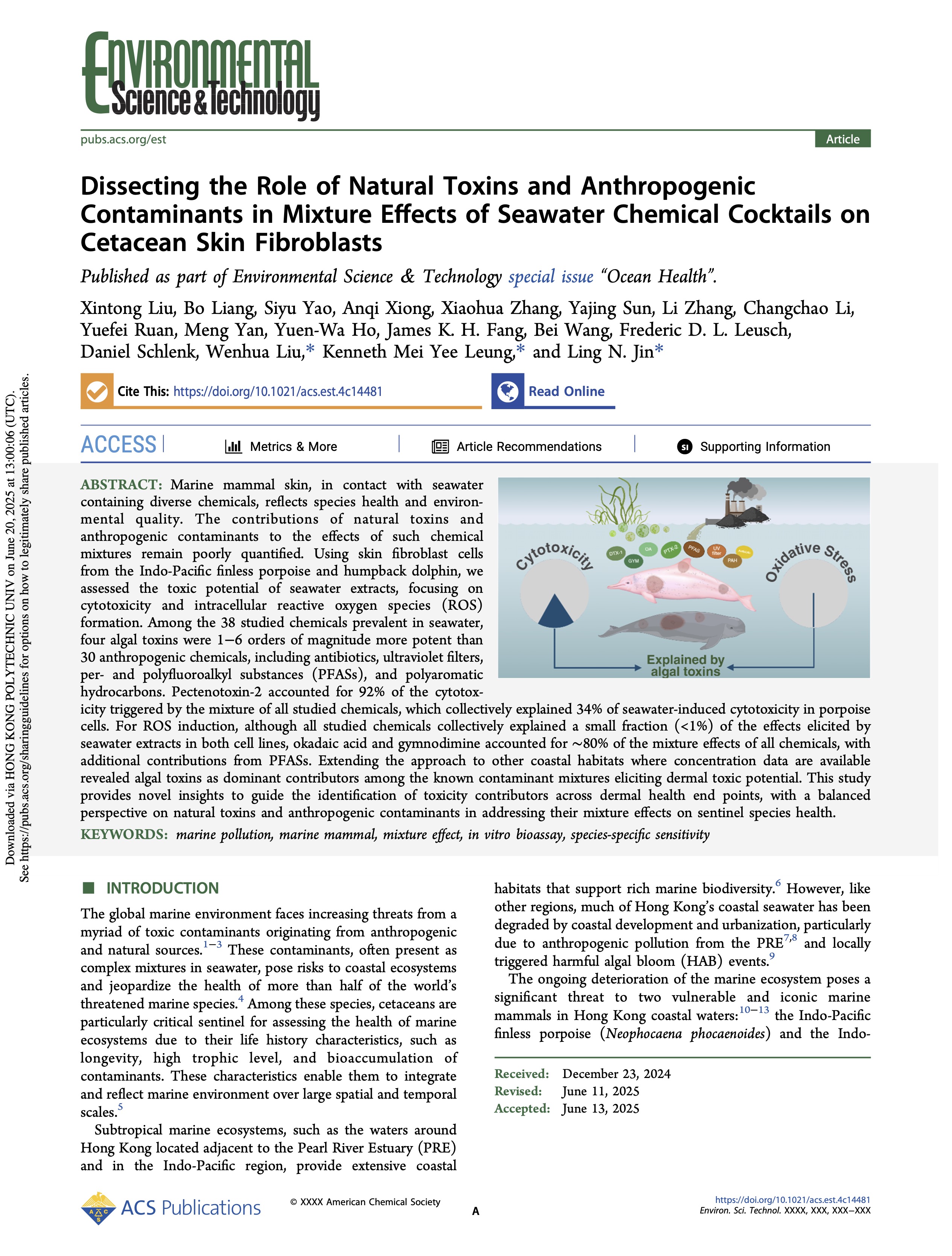Cetacean Ecology
Hierarchical Bayesian ontogenetic dietary shift analysis
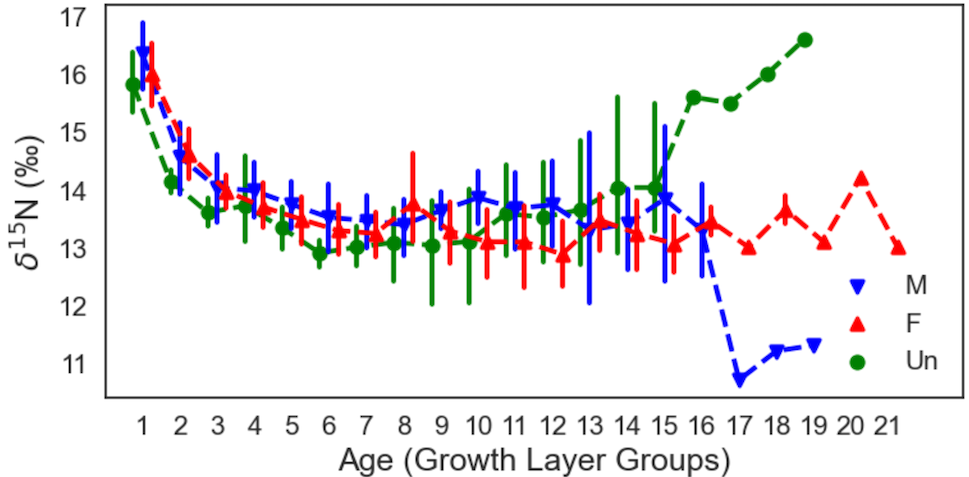
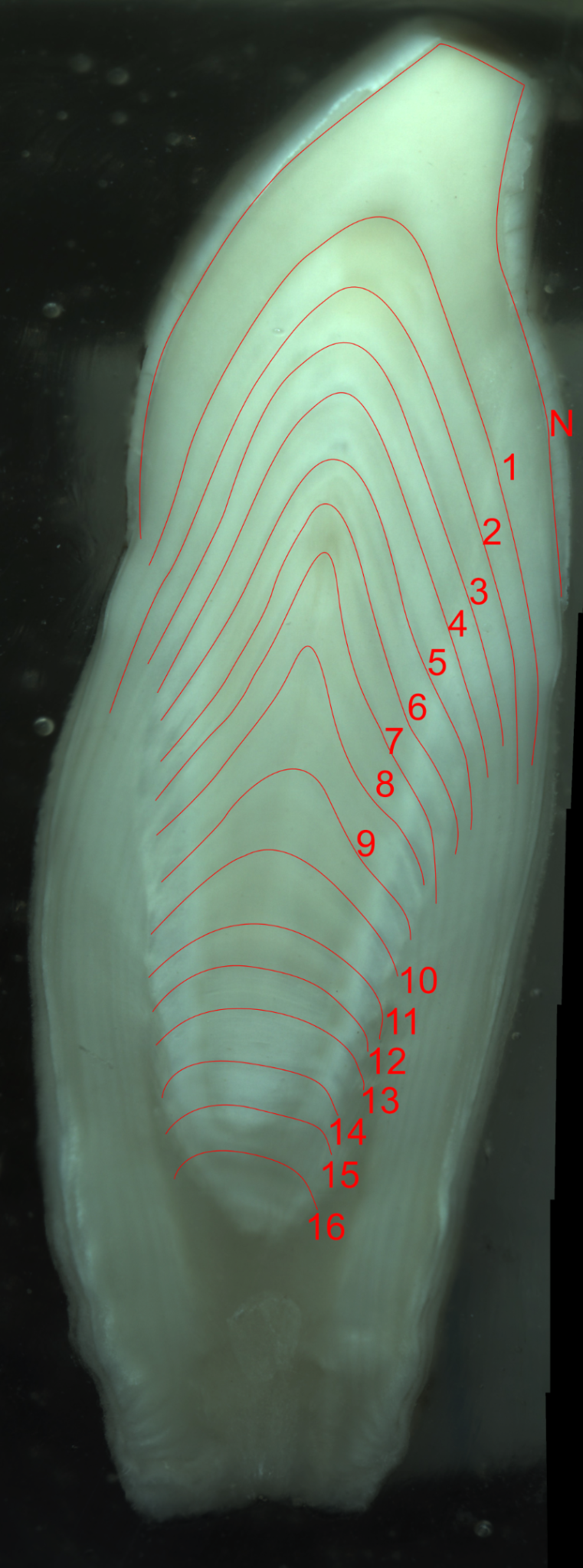
Abstract: Weaning represents a pivotal ontogenetic process for mammals, marking the transition from parental provisioning to independent foraging. In monophyodont species, distinct growth layer groups that are deposited in their teeth as the animals age represent a permanent chronological archive of physiological events across the animals’ lifetimes. Thus, biochemical analysis of annual dentine increments provides a means to explore animal physiological history. We examined the age-specific pattern, individuallevel variations, and sex-related differences in dentine nitrogen isotopic values in the Indo-Pacific humpback dolphin (Sousa chinensis) using tooth samples collected from 38 carcasses that stranded ashore in the Pearl River Delta region, southeast China, between 2007 and 2018. The longitudinal isotopic records archived in dolphin teeth offered insights into their foraging ecology and individual ontogenetic dietary life history. The overall pattern of δ15N isotopic values in the incremental layers, analyzed under a hierarchical Bayesian framework, indicates that humpback dolphins typically undergo an ontogenetic dietary shift (i.e., wean) before reaching the age of 3 yr (mean: 2.394 ± 0.143 yr), albeit there is considerable individual heterogeneity (range: 1.548 – 4.180 yr), with males consistently weaning ~3.5 mo earlier than females. Our study underscores the importance of quantifying ontogenetic parameters at the individual level, as overlooking individual variations in life history events (such as the age of weaning) may introduce biases in the broader population-level life history metrics. The application of hierarchical Bayesian modeling proved effective in quantifying individual heterogeneity and factoring it into the estimates of ontogenetic dietary shifts—an important component in analyses of broader population-level processes.
Reproductive dynamics of an inshore delphinid reflect demographic consequences of large-scale coastal constructions
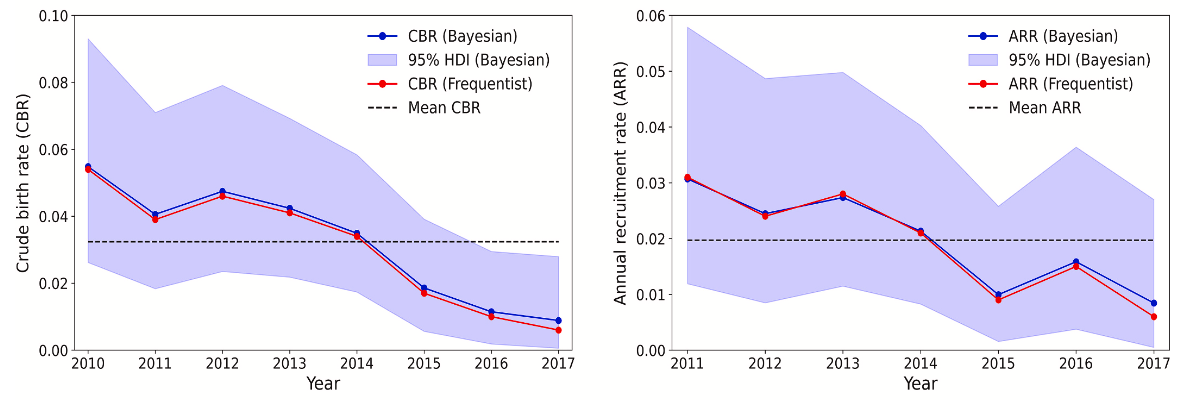
Abstract: In fast-developing regions, rapid coastal urbanization has led to considerable transformation of both landscapes and seascapes, with various adverse implications for species dependent on inshore habitats. As reliable estimates of vital demographic rates reflect the population-level responses to stressors, rigorous quantification of these parameters is central to assessing the consequences of human-induced environmental change. As a case-in-point, we quantified the reproductive parameters and calf survivorship of an obligatory inshore delphinid, the Indo-Pacific humpback dolphin (Sousa chinensis), in the anthropogenic seascape of Hong Kong prior and during two consecutive large-scale coastal infrastructure projects. Our 8-year photo-ID mark-recapture dataset was examined with both frequentist and Bayesian techniques. The reproductive output of female dolphins worsened significantly following the onset of construction activities, eventually declining alarmingly close to zero. Annual recruitment rate followed a similar trajectory. Concurrently, calf survival rates (pooled across the study period) were low, with < 60% of newborns surviving the first 3-month and < 46% surviving their first year of life. Both mean crude birth rate (~0.03) and annual recruitment rate (~0.02) were among the lowest reported for coastal delphinids to date. Cumulatively, all of this slows population recruitment and increases population susceptibility to stochastic events. We conclude that natural factors alone are not likely to cause such critically low demographic rates, underscoring the vulnerability of obligatory inshore species to growing anthropogenic pressure and habitat loss in fast-changing coastal seas. We emphasize the need for proactive (instead of reactive) conservation based on reliable sentinel model system and wise use of the precautionary principle.
Dissecting the role of natural toxins and anthropogenic contaminants in mixture effects of seawater chemical cocktails on cetacean skin fibroblasts
Abstract: Marine mammal skin, in contact with seawater containing diverse chemicals, reflects species health and environmental quality. The contributions of natural toxins and anthropogenic contaminants to the effects of such chemical mixtures remain poorly quantified. Using skin fibroblast cells from the Indo-Pacific finless porpoise and humpback dolphin, we assessed the toxic potential of seawater extracts, focusing on cytotoxicity and intracellular reactive oxygen species (ROS) formation. Among the 38 studied chemicals prevalent in seawater, four algal toxins were 1−6 orders of magnitude more potent than 30 anthropogenic chemicals, including antibiotics, ultraviolet filters, per- and polyfluoroalkyl substances (PFASs), and polyaromatic hydrocarbons. Pectenotoxin-2 accounted for 92% of the cytotox- icity triggered by the mixture of all studied chemicals, which collectively explained 34% of seawater-induced cytotoxicity in porpoise cells. For ROS induction, although all studied chemicals collectively explained a small fraction (< 1%) of the effects elicited by seawater extracts in both cell lines, okadaic acid and gymnodimine accounted for∼80% of the mixture effects of all chemicals, with additional contributions from PFASs. Extending the approach to other coastal habitats where concentration data are available revealed algal toxins as dominant contributors among the known contaminant mixtures eliciting dermal toxic potential. This study provides novel insights to guide the identification of toxicity contributors across dermal health end points, with a balanced perspective on natural toxins and anthropogenic contaminants in addressing their mixture effects on sentinel species health.
Resources Partitioning using Stable Isotope Analysis (Manuscript in prep.)
The longitudinal isotopic records archived in dolphin teeth and analysed in this study demonstrate that fine-scale dentine isotopic values vary between sexes and regions, signifying the intra-specific foraging patterns. The results indate that male humpback dolphins occupied a larger isotopic niche area and consumed prey items from a more depleted carbon sources. Isotopic niche area were shown to decrease towards the western side of the PRD region, with a considerable overlap in niche space between adjacent regions. The isotopic niche area were shown to decrease as the total fishery production increase, likely suggesting the effect of anthropogenic pressure on resource consumption pattern of humpback dolphins throughout the study period.

